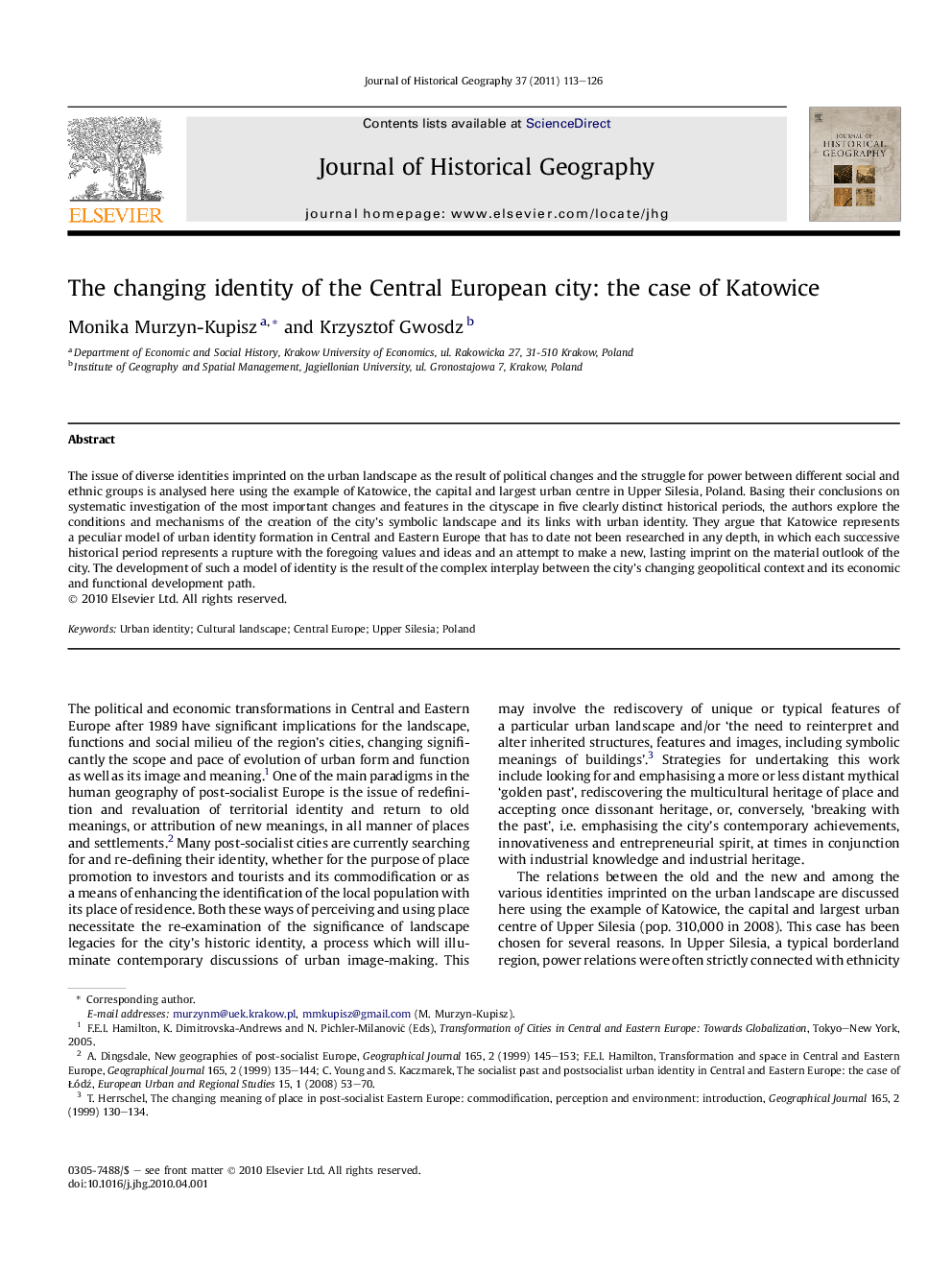| کد مقاله | کد نشریه | سال انتشار | مقاله انگلیسی | نسخه تمام متن |
|---|---|---|---|---|
| 1039570 | 944303 | 2011 | 14 صفحه PDF | دانلود رایگان |

The issue of diverse identities imprinted on the urban landscape as the result of political changes and the struggle for power between different social and ethnic groups is analysed here using the example of Katowice, the capital and largest urban centre in Upper Silesia, Poland. Basing their conclusions on systematic investigation of the most important changes and features in the cityscape in five clearly distinct historical periods, the authors explore the conditions and mechanisms of the creation of the city’s symbolic landscape and its links with urban identity. They argue that Katowice represents a peculiar model of urban identity formation in Central and Eastern Europe that has to date not been researched in any depth, in which each successive historical period represents a rupture with the foregoing values and ideas and an attempt to make a new, lasting imprint on the material outlook of the city. The development of such a model of identity is the result of the complex interplay between the city’s changing geopolitical context and its economic and functional development path.
Journal: Journal of Historical Geography - Volume 37, Issue 1, January 2011, Pages 113–126